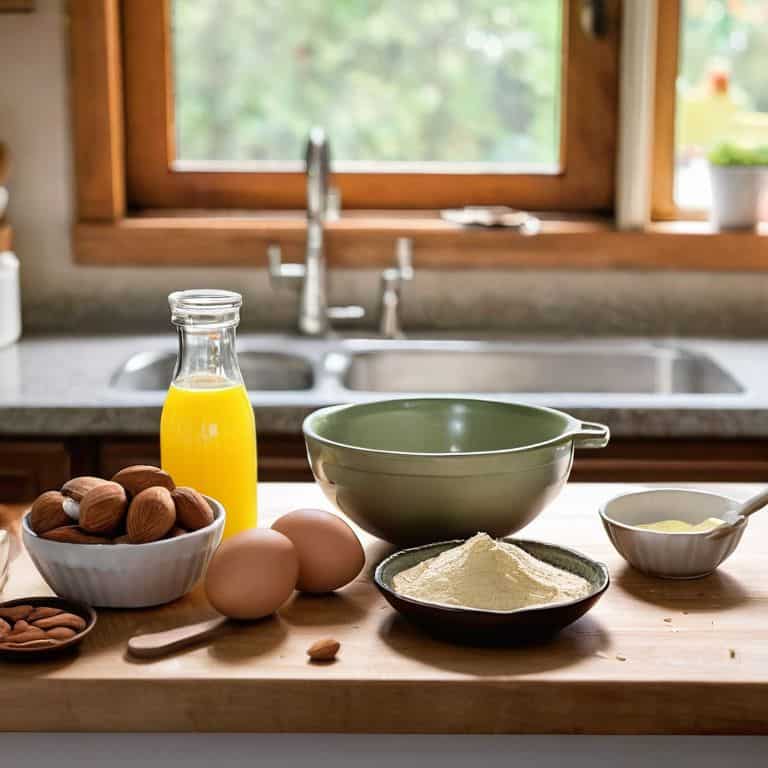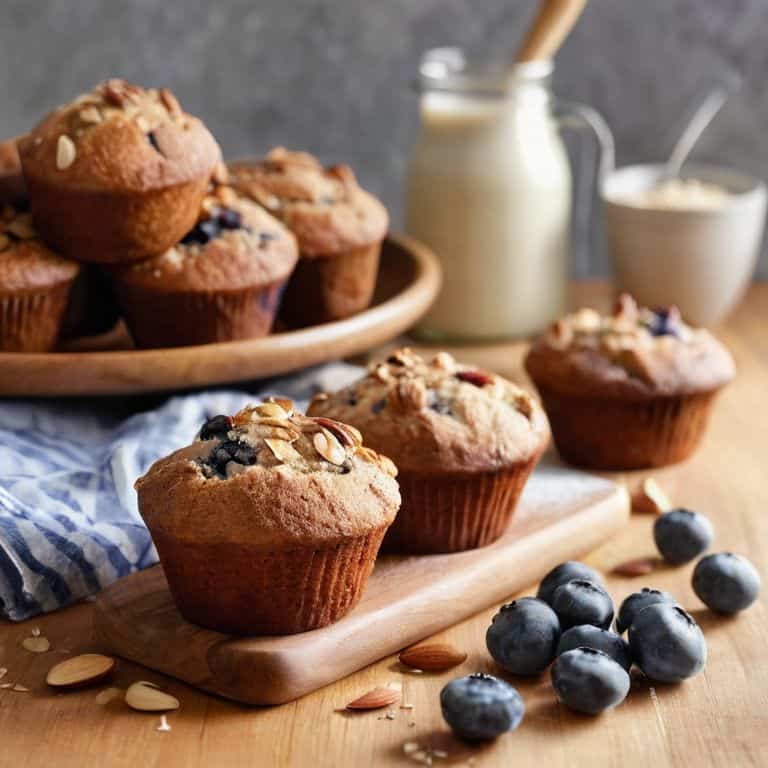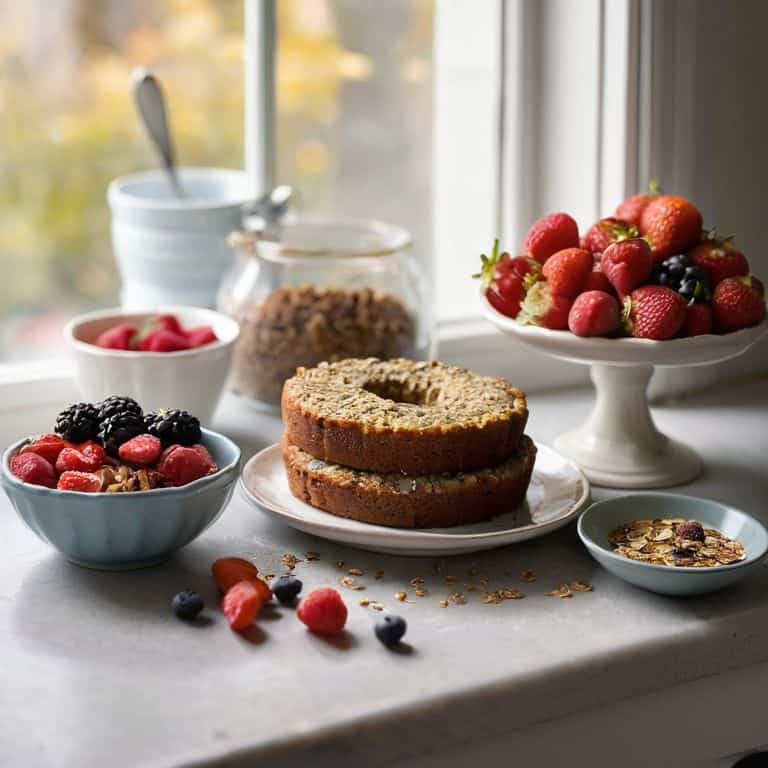I still remember the days when I thought healthy baking recipes meant sacrificing taste for the sake of nutrition. As a nutritionist, I’ve seen countless patients struggle with the same misconception – that wholesome ingredients and delicious flavors can’t coexist. But I’m here to tell you that’s just not true. I’ve spent years perfecting my craft, and I’ve discovered that the key to making healthy baking recipes work is to focus on _adding nutrients_, not just removing calories.
In this article, I promise to share my honest, hype-free advice on how to create healthy baking recipes that will make your taste buds sing. I’ll dive into my favorite tips and tricks for incorporating wholesome ingredients into your baked goods, from using seasonal fruits and veggies to experimenting with alternative flours. My goal is to empower you to take control of your baking, to make choices that nourish your body and satisfy your cravings. Whether you’re a seasoned baker or just starting out, I invite you to join me on this journey to rediscover the joy of healthy baking recipes.
Table of Contents
Recipe Details
Ingredients
- 1 1/2 cups whole wheat flour (sifted)
- 1 cup rolled oats (old-fashioned)
- 1/2 cup unsalted almond butter (creamy)
- 1/2 cup honey (pure)
- 1 large egg (at room temperature)
- 1/2 teaspoon baking soda (fresh)
- 1/4 teaspoon salt (sea salt)
- 1/2 cup chopped walnuts (optional)
- 1/2 cup dried cranberries (sweetened with apple juice)
Tools & Supplies
- Large mixing bowl
- Whisk
- Rubber spatula
- 9×9 inch baking dish
- Oven thermometer
Recipe Instructions
Step 1
First, let’s start with the foundation of any great baked good: wholesome ingredients. I like to think of my pantry as a treasure trove of nutritional goodies, where whole wheat flours, nuts, and seeds come together to create something truly special. Take some time to gather your ingredients, and don’t be afraid to get creative with the ingredients you have on hand.
Step 2
Next, preheat your oven to the perfect temperature, usually around 350-375 degrees Fahrenheit, depending on the specific recipe you’re using. While that’s warming up, let’s talk about the importance of measuring accurately. I know it can be tempting to eyeball your ingredients, but trust me, taking the extra minute to measure everything out will make all the difference in the world.
Step 3
Now it’s time to get your mix on. In a large bowl, combine your dry ingredients, such as whole wheat flour, rolled oats, and a pinch of salt. I like to think of this step as the foundation of flavor, where all the different ingredients come together to create a delicious base for your baked goods. Take a moment to appreciate the simple joys of mixing and mingling these ingredients together.
Step 4
In a separate bowl, whisk together your wet ingredients, such as eggs, Greek yogurt, and a drizzle of honey. This is where the magic happens, and your baked goods start to take on a life of their own. Don’t be afraid to get a little fancy with your flavor combinations – after all, that’s what makes baking so much fun.
Step 5
Now it’s time to bring everything together. Gradually add your dry ingredients to your wet ingredients, mixing until just combined. Be careful not to overmix, as this can lead to tough, dense baked goods. Instead, aim for a smooth, creamy batter that’s just begging to be poured into a baking dish. As you mix, remember that every bite is a chance to nourish your body – and that’s a truly beautiful thing.
Step 6
Finally, pour your batter into a greased baking dish, and pop that baby into the oven. Let the aroma of freshly baked goods waft through your kitchen, filling your senses with warm, fuzzy feelings. As you wait for your treats to bake, take a moment to appreciate the simple joys of baking – the way it brings people together, the way it makes you feel like a kid again, and the way it allows you to indulge in the sweet life, without any of the guilt.
Healthy Baking Recipes Revealed

As I delve into the world of healthy baking, I’m excited to share some game-changing tips that will take your low calorie cake recipes to the next level. One of my favorite hacks is using almond flour as a substitution for traditional flour. Not only does it add a delicious nutty flavor, but it’s also a great option for those looking for a gluten-free alternative. When substituting almond flour, be sure to adjust the ratio of liquid ingredients to achieve the perfect texture.
I’m also a big fan of using natural sweeteners like coconut sugar and stevia to reduce the calorie count of my baked goods. Coconut sugar, in particular, has some amazing health benefits, including a lower glycemic index than traditional sugar. When baking with stevia, be sure to use it in moderation, as it can be quite potent. A little goes a long way, and you can always adjust to taste.
For an extra burst of color and fun, I love experimenting with natural food coloring options like beet juice and turmeric. These ingredients not only add a pop of color to your baked goods, but they also provide an extra dose of nutrients. Whether you’re making gluten-free muffin recipes or simply looking to mix things up, these tips will help you create delicious and nutritious treats that are sure to impress.
Baking With Stevia and Coconut Sugar Benefits
As I experiment with natural sweeteners, I’m thrilled to share the benefits of baking with stevia and coconut sugar. These alternatives not only reduce calorie counts but also add unique flavors to our treats. Stevia, for instance, is a zero-calorie sweetener that’s 200-300 times sweeter than sugar, making it a game-changer for those watching their sugar intake. Coconut sugar, on the other hand, contains minerals like iron and zinc, and has a lower glycemic index than traditional sugar.
By incorporating these sweeteners into our healthy baking recipes, we can create deliciously guilt-free desserts that nourish our bodies. I love using stevia in my trail-running friendly energy balls and coconut sugar in my signature coconut macaroons. The result is a treat that’s not only scrumptious but also packed with nutrients, making healthy baking a true delight.
Low Calorie Cake Recipes With Almond Flour
When it comes to low-calorie cake recipes, almond flour is a game-changer. Not only is it low in carbs and rich in healthy fats, but it also adds a delicious nutty flavor to your baked goods. I love using almond flour to create moist and decadent cakes that are perfect for satisfying your sweet tooth without derailing your healthy eating goals. From vanilla and strawberry to chocolate and lemon, the possibilities are endless with almond flour as your base.
My favorite part about baking with almond flour is that it’s incredibly versatile. You can use it to make everything from fluffy cupcakes to rich and creamy cheesecakes. And the best part? These cakes are not only delicious, but they’re also packed with nutrients and are lower in calories than traditional cakes made with refined flour.
5 Sweet Secrets to Mastering Healthy Baking Recipes

- Choose nutrient-dense ingredients like almond flour, coconut sugar, and dark chocolate to boost the nutritional value of your bakes
- Ditch refined sugars and opt for natural sweeteners like stevia, honey, or maple syrup to reduce calorie intake and increase flavor
- Get creative with spices and flavors to reduce sugar content – think cinnamon, nutmeg, and citrus zest for a delicious twist
- Incorporate healthy fats like avocado, nuts, and seeds into your recipes for added moisture, texture, and nutrition
- Experiment with new flour types like oat, quinoa, or banana flour to increase fiber and protein content, making your bakes more satisfying and filling
Nourishing Your Way: 3 Key Takeaways
Healthy baking is not about deprivation, but about adding nourishing ingredients to create delicious treats that satisfy your cravings and support your well-being
By incorporating alternative flours like almond flour and natural sweeteners such as stevia and coconut sugar, you can create low-calorie cake recipes that are not only guilt-free but also rich in nutrients
Remember, the healthiest ingredient is joy, so don’t be afraid to experiment with new recipes, flavors, and ingredients to find your perfect balance of nourishment and delight in the world of healthy baking
Baking with Joy
When we bake with love and intention, we’re not just creating treats, we’re cultivating self-care and nourishing our bodies with every delicious bite.
Laura Paskal
Sweet Success: Embracing the Joy of Healthy Baking

As we’ve explored the world of healthy baking recipes, it’s clear that nourishing your body and satisfying your sweet tooth are not mutually exclusive. We’ve delved into the benefits of using almond flour and alternative sweeteners like stevia and coconut sugar, discovering how these ingredients can elevate our baked goods while keeping them guilt-free. By embracing these healthy baking recipes, we can break free from the restrictive mindset that often comes with dieting and instead focus on adding nutrient-dense ingredients to our favorite treats.
So, go ahead and indulge in the sweet life – not just because you can, but because you deserve to nourish your body and soul with delicious, healthy baked goods. Remember, the healthiest ingredient is joy, and when we approach healthy baking with a positive, playful mindset, we open ourselves up to a world of culinary possibilities. Happy baking, and don’t forget to savor every bite!
Frequently Asked Questions
What are some creative ways to reduce sugar in traditional baking recipes without sacrificing flavor?
I love experimenting with natural sweeteners like honey, maple syrup, and fruit purees to reduce refined sugar in traditional baking recipes. You can also try using spices like cinnamon, nutmeg, or cardamom to add depth of flavor without added sugar. And don’t forget to balance sweetness with acidity, like lemon or yogurt, for a delightful flavor twist!
How can I ensure that my healthy baked goods are not only delicious but also provide a good source of essential nutrients?
To ensure your healthy baked goods are both delicious and nutrient-rich, focus on incorporating whole foods like fruits, nuts, and seeds, and experiment with nutrient-dense flours like whole wheat or oat flour. I also love adding in protein-rich ingredients like Greek yogurt or eggs to give my treats an extra boost!
Are there any specific healthy baking recipes that are suitable for common dietary restrictions, such as gluten-free, vegan, or keto?
Absolutely, I’ve got you covered. My favorite gluten-free option is a lemon poppy seed cake made with almond flour, while my vegan go-to is a rich chocolate avocado mug cake. For keto lovers, I recommend a decadent coconut flour cheesecake with a berry compote. All of these recipes are not only delicious but also cater to common dietary restrictions, so everyone can indulge in the sweet life!
